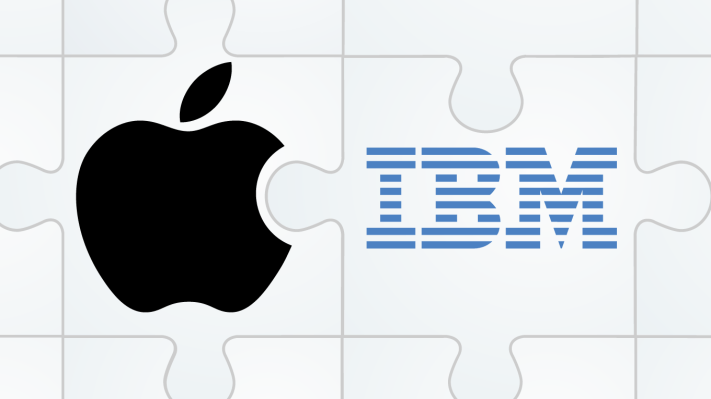IBM and Apple announced today that they had reached the 100 app milestone in their mobile app partnership.
The 100 apps cover the gamut of 60 professional roles across 14 industries and include iPhone, iPad, iPad Pro, Apple Watch and even Apple TV apps, Katharyn White, Vice President of IBM and Apple Partnership for IBM Global Business Services told TechCrunch.
Verticals include government, healthcare, telecommunications, transportation, insurance and many more.
Each app is unique in that the team starts with a problem, working closely with the employees who will actually be using the app. The idea is to understand the nature of the workflow and then apply mobile development principles to transform it into something entirely new. The ultimate goal, which White has expressed in several conversations, is bringing simplicity and a ‘wow factor’ to each app the team creates.
The partnership works because each company can draw upon its unique strengths, Maribel Lopez, principal at Lopez Research explained. “I think [Apple] brings the concept of simplicity (direct to task) and beauty to enterprise apps. IBM on the other hand understands business workflow, what generates productivity and back-end integration,” she said.
It also appeals to customers, says Gartner analyst Van Baker. “The Apple IBM partnership combines the dominant enterprise device vendor with a dominant enterprise software vendor which is inherently appealing to [customers],” he said.
These apps can do so much more than simply mobilizing a task from a PC because a mobile device and all it brings can change the way people work, Lopez explained. “Partnerships like this help companies create apps that were better than their PC predecessors because they can use more functions of the device — camera, voice, messaging, location — and they can do it anywhere since it’s [portable],” she said.
The two companies understand this and don’t want to simply rebuild a desktop application in a smaller footprint, White says. Instead, they want to change the way people work, giving them access to information in the context of the job.
Many of these tools work in conjunction with back-end systems like ERP, CRM and content management; and IBM can bring its enterprise expertise to bear to help customers connect the apps developed with Apple to these systems.
IBM also has plans to tap into Watson, its cognitive intelligence platform, across the partner apps, bringing a set of analytics and intelligence to the back end. This means, as these apps gather more information, they could use this knowledge to run more effectively in the future.
It could also generate some interesting technology combinations from the two partners. “Combining a Siri front end with a Watson back end could be a very powerful offering,” Baker said.
While obviously this partnership is part of the broader IBM transformation process, White says from her perspective that is not her primary motivation here. “My motivation is to change the lives of people at work. The sub-benefit is that we are also changing the way we sell and changing our company,” she said.
